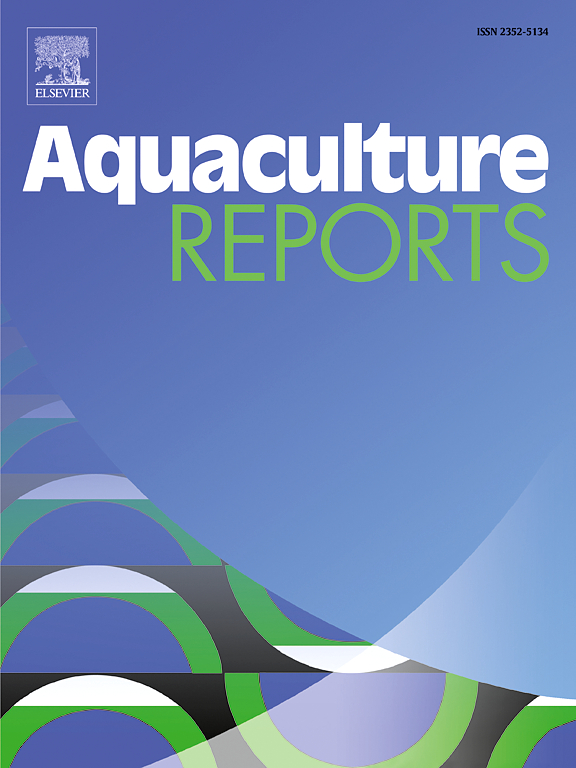Integrating photovoltaic with sea cucumber aquaculture: Environmental impacts and holothurian digestion and aestivation
IF 3.2
2区 农林科学
Q1 FISHERIES
引用次数: 0
Abstract
Aquavoltaics, which integrates solar power with aquaculture, offers a promising solution to land-use conflicts between food and energy production while aligning with sustainable development goals. Despite the burgeoning of aquavoltaics, the environmental impacts of photovoltaic (PV) in aquaculture remain poorly understood. We investigated annually the effects of PV on coastal pond environments and cultivated animals. Our results indicated that compared with non-PV pond (nPVP), light intensity in shaded areas of the PV pond (PVP) was significantly reduced by 80.5 ± 12.0 %, thereby water temperature decreased by 1.20 ± 1.25 °C. Plankton species composition showed no significant differences between the two groups. However, Pyrrophyta abundance increased significantly during spring, and zooplankton abundance was significantly reduced in PVP. Sea cucumbers digestive enzyme activities remained unaffected throughout the year. However, aestivation durations were shortened by 12 days in sub-adults and by 1 day in adults in PVP. Piecewise structural equation modeling revealed that light intensity negatively affected temperature, phytoplankton and organic matter (OM), while temperature and phytoplankton negatively affected zooplankton in PVP. Our study demonstrated that PV can effectively reduce water temperatures, enhance sea cucumbers growth by shortening aestivation durations, and have no impact on plankton compositions and sea cucumbers digestive physiology. However, the increased abundance of Pyrrophyta warrant further attention. These findings provide valuable insights into the sustainable development of integrating PV with sea cucumber aquaculture in coastal ponds.
求助全文
约1分钟内获得全文
求助全文
来源期刊

Aquaculture Reports
Agricultural and Biological Sciences-Animal Science and Zoology
CiteScore
5.90
自引率
8.10%
发文量
469
审稿时长
77 days
期刊介绍:
Aquaculture Reports will publish original research papers and reviews documenting outstanding science with a regional context and focus, answering the need for high quality information on novel species, systems and regions in emerging areas of aquaculture research and development, such as integrated multi-trophic aquaculture, urban aquaculture, ornamental, unfed aquaculture, offshore aquaculture and others. Papers having industry research as priority and encompassing product development research or current industry practice are encouraged.
 求助内容:
求助内容: 应助结果提醒方式:
应助结果提醒方式:


